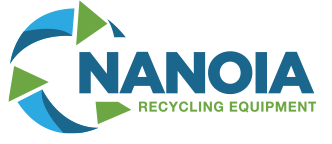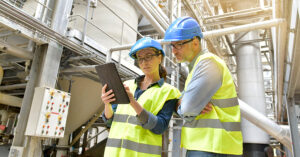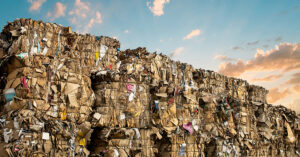For businesses that generate a significant amount of recyclable waste, investing in an industrial baler can lead to substantial long-term savings. But how do you measure the cost-effectiveness of industrial balers?
It’s not just about the upfront investment — it’s about evaluating how the equipment can impact your bottom line over time. In this article, we’ll break down what contributes to baler ROI, how to choose the right type, and what hidden savings might surprise you.
What Contributes to the Cost-Effectiveness of Industrial Balers?
Initial Investment vs. Long-Term Savings
Like most recycling equipment purchases, industrial balers come with an upfront cost. Vertical balers, which are ideal for lower waste volumes and tighter spaces, tend to be more budget-friendly. Horizontal balers, designed for higher throughput, carry a higher price tag but are built for large-scale operations.
That said, the initial cost is just one part of the equation. With proper use and routine maintenance, balers can last over 20 years. When you spread the investment across their lifespan and factor in the savings they generate, the total cost of ownership becomes highly favorable.
Operational Efficiency and Labor Cost Reduction
Balers significantly reduce the time spent manually handling waste. Instead of employees breaking down boxes or hauling loose materials, the baler automates compression and consolidation. This allows your team to stay focused on core operations, not waste management.
Another benefit? Fewer pickups from your waste hauler. By compacting materials into dense bales, you can reduce waste volume by up to 90%. That means fewer trips, lower service fees, and less downtime waiting for dumpsters to be emptied.
Waste Hauling and Disposal Savings
Hauling loose waste is expensive — and inefficient. Every uncompressed load requires more space and more pickups. With baled material, businesses often see a dramatic reduction in hauling costs. For example, reducing pickups from five times a week to two can save thousands of dollars annually.
And when baled waste is recyclable, it avoids landfill fees altogether. Many municipalities also offer incentives for diverting waste from landfills, making the cost-effectiveness of industrial balers even more compelling.
Revenue from Recyclable Material Sales
Baled recyclables are easier to transport and process, and therefore more valuable. Clean, uniform bales of cardboard, plastic, or aluminum can fetch premium rates on the recycling market. For some businesses, this translates into a steady stream of monthly revenue.
Securing long-term recycling contracts becomes much easier when you’re providing consistently high-quality bales. Whether you’re in retail, manufacturing, or logistics, turning waste into a revenue-generating asset improves both sustainability and profitability.
Selecting the Right Baler for Maximum ROI
Vertical vs. Horizontal Balers
Choosing the right baler depends on your facility’s volume and operational needs.
Vertical balers work best for small to medium operations — think grocery stores, retail locations, or hotels. They take up less space and require lower maintenance.
Horizontal balers are designed for high-output environments like warehouses, distribution centers, or manufacturers. They can handle large volumes continuously and often come with automatic feeding mechanisms.
Auto-Tie and Closed-Door Models
For facilities operating around the clock or dealing with high waste volumes, auto-tie horizontal balers are a game-changer. They reduce labor costs by automatically tying off bales and allow for continuous operation.
Closed-door horizontal balers offer another layer of efficiency. They produce extra-dense bales, which not only reduce storage needs but also cut down on transportation costs by allowing more weight per truckload.
Other Hidden Cost Benefits of Using Balers
Improved Safety and Compliance
Loose waste is more than just unsightly — it’s dangerous. Boxes stacked in aisles or plastic wrap scattered across the floor can create tripping hazards and increase the risk of fire.
Balers help maintain a clean, organized facility. This contributes to better OSHA compliance, reduces the likelihood of workplace injuries, and creates a safer environment for your team.
Sustainability and Corporate Responsibility ROI
Investing in a baler supports larger sustainability goals. Whether you’re working toward ESG benchmarks or aiming to reduce your carbon footprint, balers help divert significant amounts of waste from landfills.
This, in turn, enhances your brand image. Consumers, investors, and even potential employees are increasingly drawn to companies that show a real commitment to environmental responsibility. In some cases, you may even be eligible for tax credits or local incentives for your recycling efforts.
Financing Options and Maintenance Considerations
Flexible Financing Models
Worried about cash flow? Leasing a baler instead of buying outright might be the solution. Leasing allows you to preserve working capital while still getting the equipment you need. Plus, you can often upgrade during lease renewals as your business grows.
And don’t forget about Section 179 — this tax deduction allows you to deduct the full purchase price of qualifying equipment, including balers, in the year you place it into service.
Maintenance Plans and Downtime Prevention
The cost-effectiveness of industrial balers depends heavily on consistent performance. Preventive maintenance helps avoid unexpected breakdowns, reduces repair costs, and extends the equipment’s lifespan.
At Nanoia Recycling Equipment, we provide responsive repair services and flexible maintenance plans to keep your baler operating at peak efficiency. Our support team is trained to minimize downtime and ensure your system stays productive.
Conclusion: The True Cost-Effectiveness of Industrial Balers
From lowering hauling and labor costs to generating revenue from recyclable materials, industrial balers offer a strong return on investment. By improving operational efficiency and supporting environmental initiatives, they play a critical role in modern waste management strategies.
Work with the Experts at Nanoia Recycling Equipment
At Nanoia Recycling Equipment, we don’t just sell balers — we deliver comprehensive solutions that include design, fabrication, installation, financing, and long-term maintenance. Our team works closely with businesses to ensure they select the most cost-effective baler solution for their unique needs.
Ready to reduce costs, streamline operations, and maximize your recycling program? Contact us today for a custom solution tailored to your facility.






